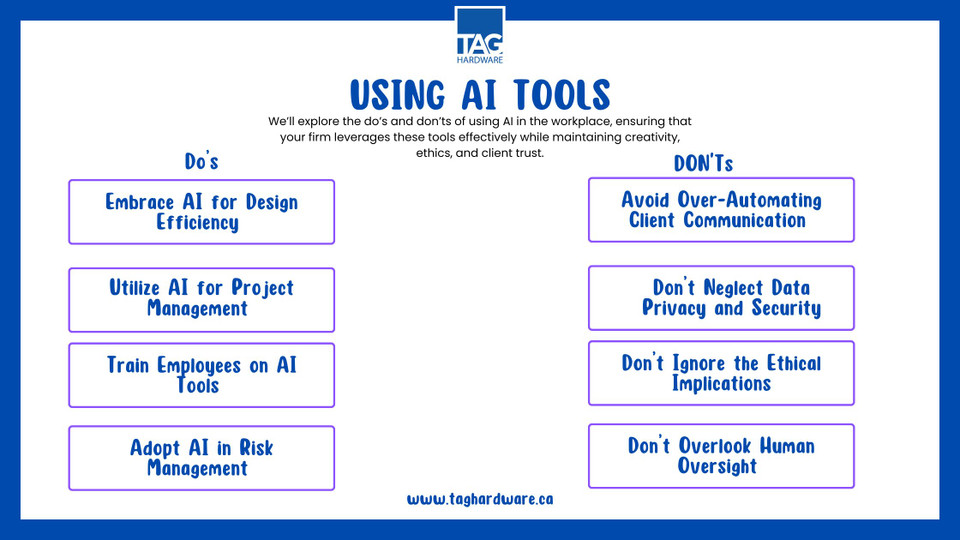As architectural firms evolve with technological advancements, Artificial Intelligence (AI) is rapidly transforming how the industry operates. AI tools have become invaluable assets in creating more efficient, sustainable, and innovative architecture from optimizing design processes to enhancing project management. However, with these advancements come important considerations. While AI can streamline many aspects of architectural work, it’s essential to balance technology and the irreplaceable human touch that defines great architecture. In this blog, we’ll explore the do’s and don’ts of using AI in the workplace, ensuring that your firm leverages these tools effectively while maintaining creativity, ethics, and client trust.
The Do's and Don'ts of Using AI Tools in the Workplace for an Architectural Firm
Do’s
1. Embrace AI for Design Efficiency
Use AI tools to automate repetitive tasks like drafting, rendering, and simulations. This allows architects to focus on creativity and innovation in design.
2. Utilize AI for Project Management
Integrate AI to streamline project management tasks, such as budgeting, scheduling, and tracking materials, improving efficiency in handling complex projects.
3. Incorporate AI for Sustainable Design Solutions
Leverage AI to analyze data for energy-efficient solutions, optimize building performance, and reduce environmental impact in architectural projects.
4. Enhance Client Presentations with AI
Use AI-driven visualization tools to create immersive 3D models and virtual tours that provide clients with a clear understanding of the design, improving decision-making.
5. Adopt AI in Risk Management
Employ AI algorithms to assess and predict risks in projects, whether they are structural integrity or environmental impacts, helping mitigate potential issues early.
6. Train Employees on AI Tools
Provide regular training and workshops for employees to stay up to date with the latest AI tools and technologies relevant to the architecture field.
Don’ts
1. Don’t Rely Entirely on AI for Design Creativity
While AI can assist in design generation, avoid using it as the sole solution for creative design decisions. Architecture still requires the human touch and creativity.
2. Avoid Over-Automating Client Communication
Do not use AI chatbots or automated tools for all client interactions. Personalized communication is key to maintaining strong client relationships in architecture.
3. Don’t Neglect Data Privacy and Security
When using AI tools, ensure that client data and project information are securely handled. Be mindful of sharing sensitive architectural designs or intellectual property through AI platforms.
4. Don’t Ignore the Ethical Implications
Be cautious of using AI tools that could infringe on intellectual property or create unregulated designs. Stay aware of ethical guidelines when deploying AI.
5. Don’t Overlook Human Oversight
Always have an architect or engineer review AI-generated designs, as these tools can make errors in context, functionality, or aesthetics that need human correction.
6. Don’t Rush AI Implementation
Avoid adopting AI tools without a proper understanding of their use. Introduce AI in phases, ensuring your team is comfortable and capable of utilizing the technology effectively.
 Canadian Dollar
Canadian Dollar
 US Dollar
US Dollar


